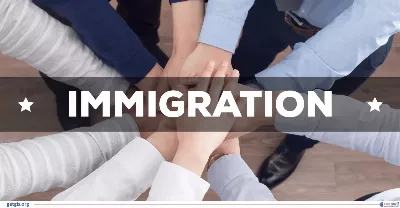Pathways for US H1-B Visa Holders to Relocate to Canada
Updated On
-
Copy link
This blog explores the best pathways for U.S. H-1B visa holders to relocate to Canada, including Express Entry, work permits, and employer sponsorship. Discover the right option to make your move seamless.
For US H-1B visa holders looking to explore new opportunities, Canada offers several appealing pathways to permanent residence. With its robust immigration programs and high demand for skilled workers, Canada has become a top destination for professionals seeking a fresh start. From Express Entry to Provincial Nominee Programs, the options are diverse and welcoming. Let’s explore the best ways to make the move.
Options for US H-1B Visa Holders to Move to Canada
Canada offers multiple immigration pathways for U.S. H-1B visa holders seeking new opportunities. From express entry to employer-sponsored programs, each option has its own benefits. The table below highlights key pathways and their requirements.
| Pathway | Status | Validity Period | Eligibility Criteria |
|---|---|---|---|
| Express Entry | Permanent Residency | Granted indefinitely upon approval | Skilled workers with high CRS score |
| Provincial Nominee Program (PNP) | Permanent Residency | Granted indefinitely upon approval | Available for both skilled and non-skilled workers, with eligibility varying based on the specific provincial stream |
| Intra-Company Transfers | Work Permit | Executives & Managers: Initially up to 3 years, renewable in 2-year increments, with a maximum stay of 7 years. Specialized Knowledge Transferees: Initially up to 3 years, renewable in 2-year increments, with a maximum stay of 5 years | Must be employed in an executive, managerial, or specialized knowledge role within a multinational company operating in Canada |
| Temporary Foreign Worker Program (TFWP) | Work Permit | Up to 3 years, with potential for extensions | Requires a valid job offer from a Canadian employer supported by a Labour Market Impact Assessment (LMIA) |
| Free Trade Agreements (FTA) Work Permit | Work Permit | Varies based on the specific FTA | Open to citizens of countries with an FTA agreement with Canada, provided they meet the specific criteria outlined in that agreement |
| International Experience Canada (IEC) | Work Permit | Typically up to 2 years | Designed for young professionals (generally 18-35 years old) from eligible countries participating in the program |
Also Read: IRCC Canada’s Immigration Levels Plan 2025 - 2027
Move to Canada as a Permanent Resident: Steps to Relocate
H-1B visa holders seeking a U.S. green card may find Canada’s permanent residency process faster and more accessible. Canada’s Express Entry system ranks skilled workers based on education, experience, and language skills, giving many H-1B professionals a competitive edge.
Unlike the U.S. green card process, which involves lotteries, employer sponsorship, and long wait times, Canada aims to welcome over 360,000 immigrants annually, offering greater stability. Here are some ways to relocate to Canada.
Express Entry
Canada’s Express Entry system offers a streamlined pathway to permanent residency for skilled workers. This points-based system ranks candidates based on factors like education, work experience, and language proficiency, with top applicants receiving invitations to apply. With a standard processing time of just six months, it’s one of the fastest ways to secure Canadian PR.
- To qualify, you must meet the criteria for one of the three federal immigration programs:
- Canadian Experience Class (CEC)
- Federal Skilled Worker Program (FSWP)
- Federal Skilled Trades Program (FSTP)
- Higher-ranking candidates move ahead in the selection process, and those with Canadian work experience earn extra points to boost their scores.
- Category-based selection may lower the required score for candidates in in-demand fields like healthcare, skilled trades, and STEM.
- Approved applicants receive PR status for themselves, their spouse, and any dependents included in the the application.
Also Read: Latest IRCC Processing Times Updates as of February 2025
Provincial Nominee Programs
If you don’t meet the requirements for Express Entry or have a low score, the Provincial Nominee Program (PNP) could be your best route to Canadian permanent residency. This program allows provinces to nominate skilled workers based on their economic needs. With over 80 different immigration streams, the PNP offers multiple opportunities for candidates to qualify.
- To apply for PR through the PNP, you must intend to live in the province or territory that nominates you.
- The process involves two steps: first, securing a provincial nomination, and then applying to the federal government for PR.
- Some PNP streams allow direct applications if you meet specific criteria, such as having a valid job offer in the province.
- Other streams require an invitation from a province’s expression of interest (EOI) pool before applying for nomination.
- Many PNPs target skilled professionals in high-demand sectors like healthcare and technology.
- If you receive PR through a provincial nomination, your spouse and dependents included in the application will also gain PR.
Also Read: Canada’s Latest PNP Express Entry Draw Sees CRS at 750
Moving to Canada as a Temporary Foreign Worker
With rising demand and a growing pool of skilled candidates, Canada’s PR pathways have become more competitive. If your CRS score isn’t high enough for Express Entry and you don’t secure a provincial nomination, a work permit can be a temporary alternative. Gaining Canadian work experience through a permit can boost your Express Entry points or help you qualify for a PNP nomination through a job offer.
Intra-Company Transfers
Foreign workers employed by multinational companies with operations in Canada may be eligible for this immigration pathway. This option allows professionals to transfer to a Canadian branch, subsidiary, or affiliate, provided certain conditions are met. While the program has a maximum stay limit, it can open doors to permanent residency opportunities.
- The employer must have a parent, subsidiary, branch, or affiliate in Canada (excluding franchises or license agreements.
- Candidates must have worked full-time for at least one year with the company in the past three years.
- The transfer must be to a similar role within the Canadian entity.
- Employment in Canada should be in a permanent, ongoing position.
- This pathway is primarily for executives, managers, and individuals with specialized knowledge.
Temporary Foreign Worker Program
Canada’s Temporary Foreign Worker Program (TFWP) offers work permits to foreign nationals across all occupations, regardless of nationality. However, obtaining a permit requires securing a job offer from an employer approved by the Labour Market Impact Assessment (LMIA) process. Here’s what you need to know about applying for a TFWP work permit.
- Work permits under TFWP are job-specific, meaning you can only work for the employer that sponsors you.
- Employers must obtain an LMIA, proving that no Canadian citizen or permanent resident is available for the role.
- The LMIA process is time-consuming and requires effort from the employer to demonstrate the need for a foreign worker.
- Job openings with LMIAs can be found on Canada’s official job bank and other employment platforms.
- Connecting with an employer who already has an LMIA or is willing to apply for one improves your chances of securing a work permit.
Free Trade Agreements
Canada offers work permits through its free trade agreements (FTAs), allowing eligible professionals from partner countries to work for specific employers. These permits are typically tied to job roles and require applicants to meet certain criteria. If you’re a citizen of a country covered by one of Canada’s FTAs, you may qualify based on your occupation and other eligibility factors.
- FTA work permits are employer-specific and granted under trade agreements with select countries.
- Eligibility depends on citizenship and occupation, with each FTA outlining specific requirements.
- For example, The Canada-United States-Mexico Agreement (CUSMA) allows U.S. and Mexican citizens to apply for work permits.
- CUSMA covers 63 occupations, including management consultants, scientists, teachers, and medical professionals.
- Other FTAs also offer work permit options, each with its own conditions and job categories.
Check Out: Latest IRCC Processing Times Updates as of February 2025
International Experience Canada Program
International Experience Canada (IEC) offers young adults from select countries the chance to work in Canada for up to two years. The program has three distinct streams, each catering to different work opportunities and requirements. Eligibility is based on age and country of citizenship, with limited work permits issued annually.
- Eligible Age Range: Candidates must be between 18-35 years old, though some countries have a limit of 18-30.
- Program Streams:
- Working Holiday: An open work permit that does not require a job offer and allows flexibility in employment.
- Young Professionals: A work permit tied to a specific employer, requiring a job offer in Canada.
- International Co-op (Internship): For post-secondary students with an internship or placement offer, tied to one employer.
- Work Permit Availability: The number of permits varies by country, with a fixed quota each year.
- Selection Process: Young Professionals permits are easier to obtain due to lower demand, while Working Holiday permits follow a lottery system when demand exceeds availability.
Quick Read: IEC 2025 First Draw: 10,274 Canada Work Permits Issued
Spousal Open Work Permits
When moving to Canada as a permanent resident, your spouse is usually granted PR alongside you if they are included in your application. However, if you are relocating on a work permit, you’ll need to take additional steps to secure their legal status. In many cases, your spouse may qualify for a spousal open work permit (SOWP), allowing them to work freely in Canada.
- Spouses of work permit holders may need to apply separately for legal status in Canada.
- SOWPs are not employer-specific, giving spouses the flexibility to work for most employers in various industries.
- Eligibility for a SOWP depends on the primary applicant’s work permit type, such as those under FTAs, ICTs, or the TFWP.
- Requirements for obtaining a SOWP vary based on the specific work permit program.
Suggested Reading: Canada Spousal Open Work Permit: Full List of Eligible Jobs
Unlock Your Path to Canada with GetGIS: Connect and Relocate with Ease
Relocating to Canada as a U.S. H-1B visa holder is possible through multiple pathways, including Express Entry, employer sponsorship, and specialized work permits. Each option offers unique benefits, making it essential to choose the one that best fits your career goals. Start exploring your pathway today for a smooth transition.
Connect with GetGIS for a seamless transition to Canada. The immigration experts here will help you choose the right pathway along with the application process and relocation.
Useful Links for You:




